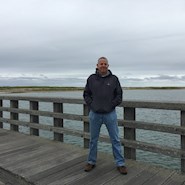We were taking it easy at a vineyard in Northern Arizona. It was time for some wine tasting. There were two types of wine offered: white and red. At least, that is what I thought the categories were because I am not great at distinguishing wines otherwise. Having only two types makes it easier, in keeping with the theme of taking it easy.
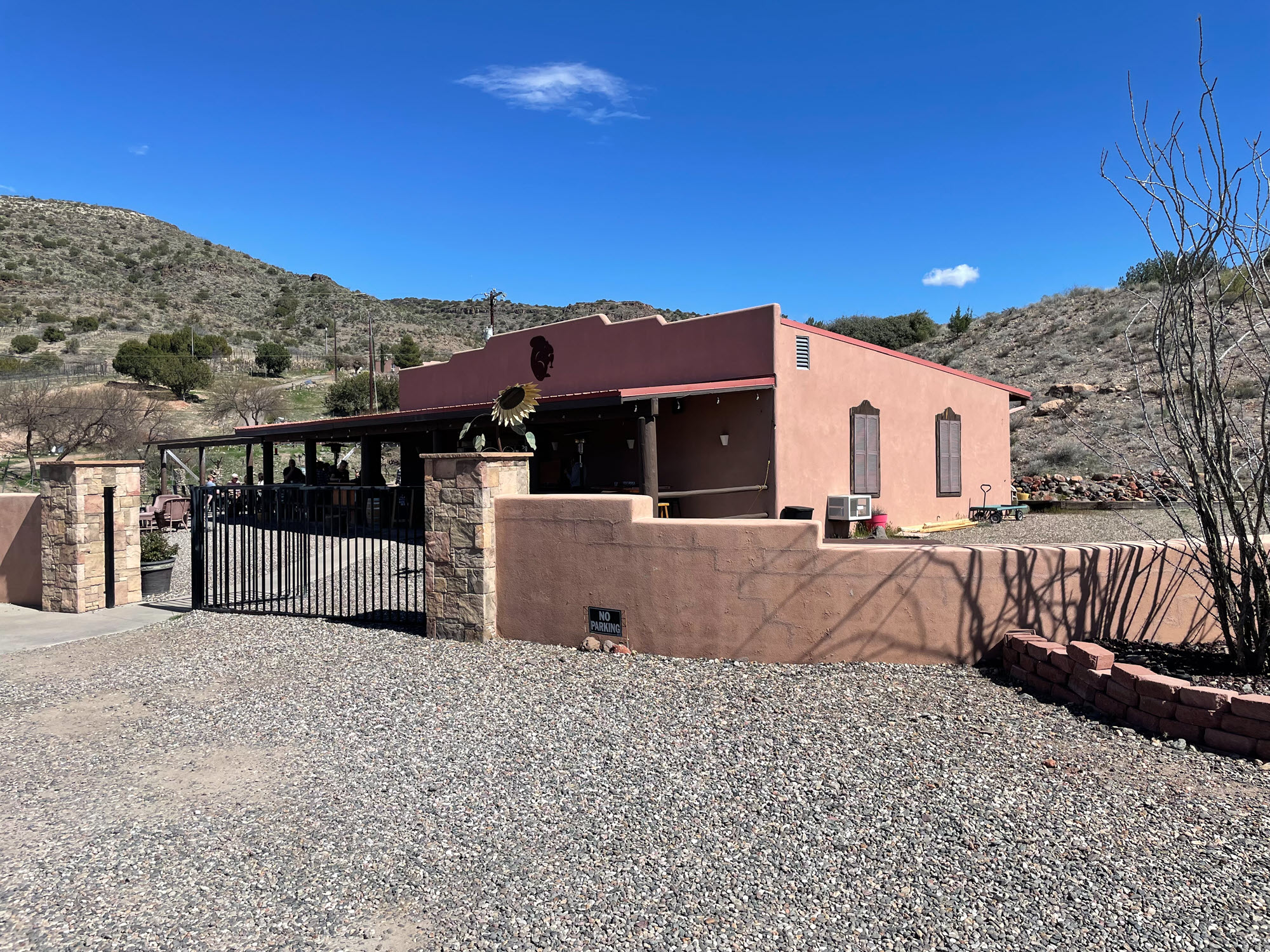 Brian Brenner
Brian Brenner I like the ritual of wine tasting mostly for the commentary, which is imaginative but seems unrealistic. We were provided five samples to try. Sample #1 was a red wine (confirmed by the color). The written guide provided a detailed discussion of expected bouquets. Sample #1 was described as a fruity specimen, which made sense because it was made out of grapes, which are a fruit. The tasting method was to swirl the wine beneath your nose and confirm the various aromas. Our barista proclaimed that this wine was a vintage of something, with an aroma that had notes of red grapefruits, plums, and unwashed muskrats. There were also hints of pamplemouse (which is French for “grapefruit” so that was redundant) and flakes of graphite.
As an engineer, I was fearful that my rational nature and training would interfere with my ability to perceive the subtle aromatic notes and hints associated with appreciation of fine wines. Fortunately, after many sips of wine, I could perceive all the subtle notes and hints. However, at that point, it seemed like each of the wines had the same notes and hints. So the descriptions didn’t really matter.
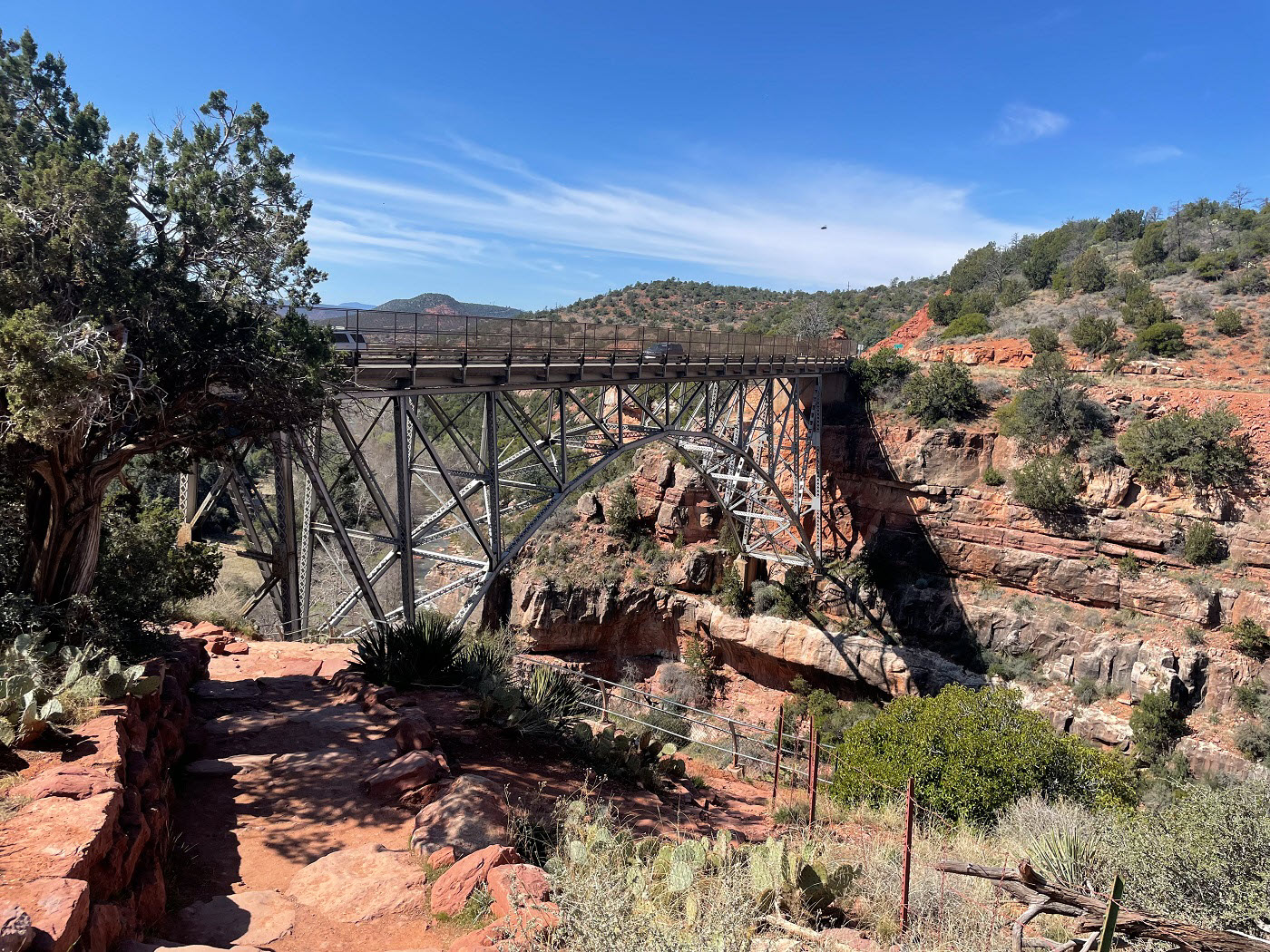 Brian Brenner
Brian Brenner After crossing a pleasant bridge, we found ourselves standing on a corner in Winslow, Arizona.
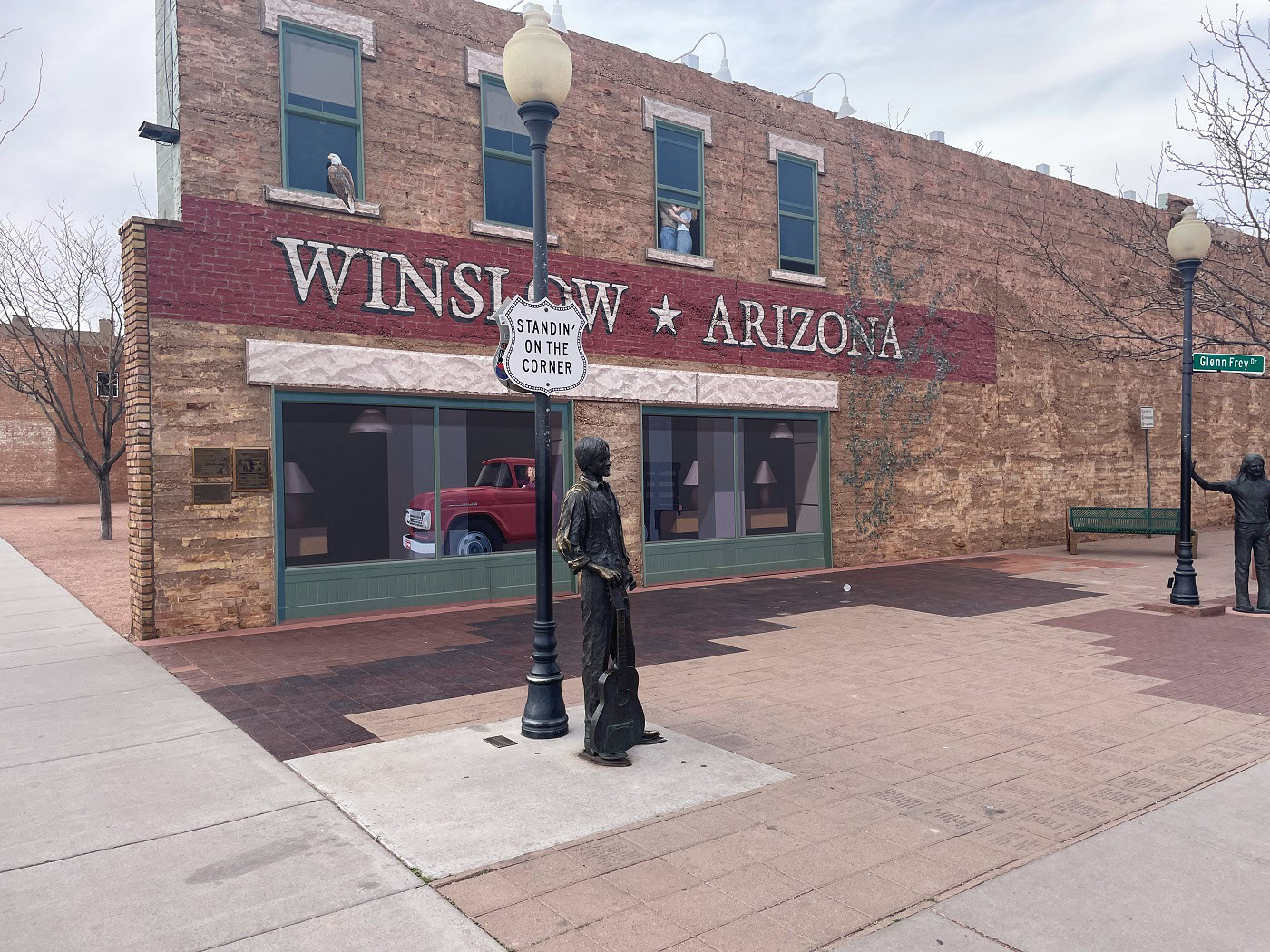 Brian Brenner
Brian Brenner Winslow is situated on a high plateau east of Flagstaff. Arizona, it seems, has two climate zones: low elevation and high elevation. The lower places in the south, like Phoenix, have little rain and are very hot and dry for most of the year. These desert areas don’t support modern human civilization very well without much infrastructure intervention, such as canals to transport water from the Colorado River and close to universal air conditioning in the summer. The Salt River is impounded in a large reservoir north of the city, providing fresh water. The spectacular Roosevelt Lake Bridge is adjacent to the dam.
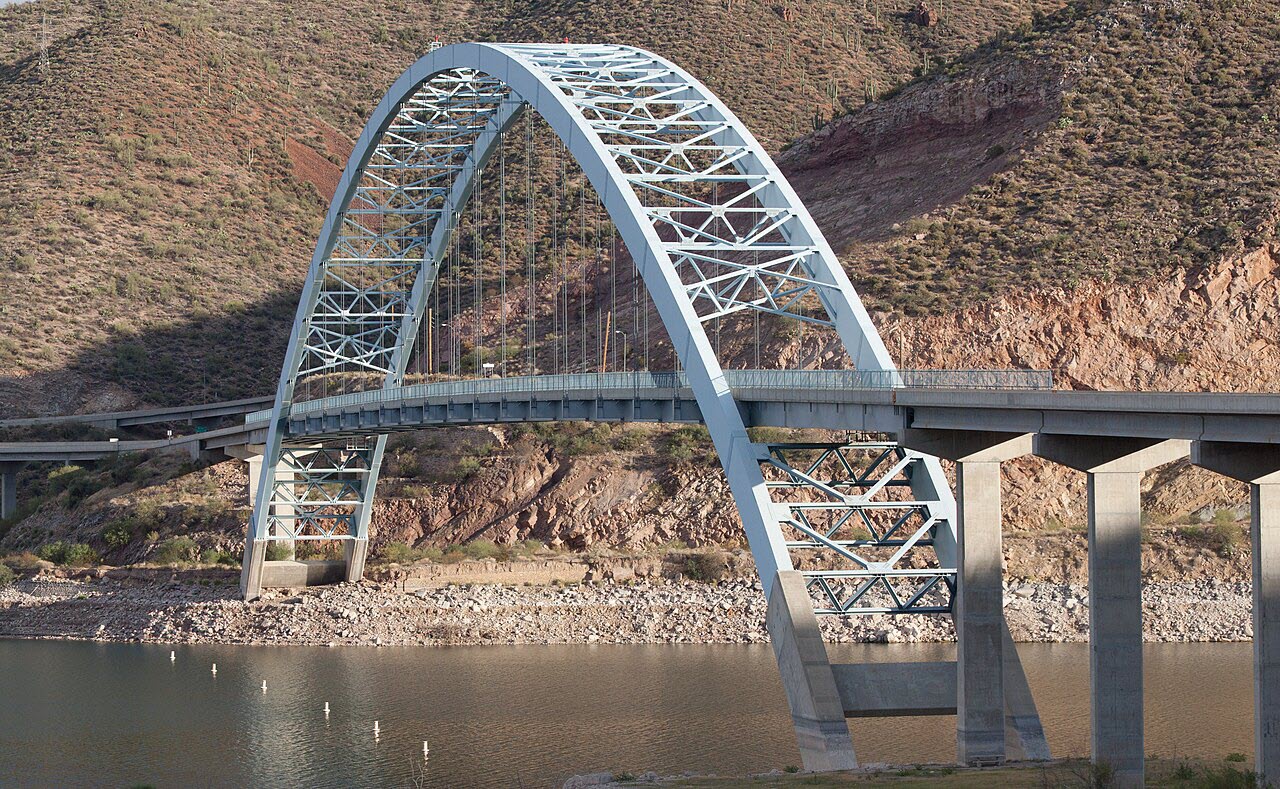 Alan Stark
Alan Stark Phoenix is at the center of a vast metropolitan area with over 4 million inhabitants. Beyond the city, the surrounding land changes quickly from sprawling urbanity to desert scrubland. Large expanses have a lot of cacti but not many inhabitants. Driving there is a much different experience than driving in the northeast U.S., where the wilderness can be densely forested but with occasional cabins and settlements. So, in a sense, that any people at all live around Phoenix is a civil engineering triumph.
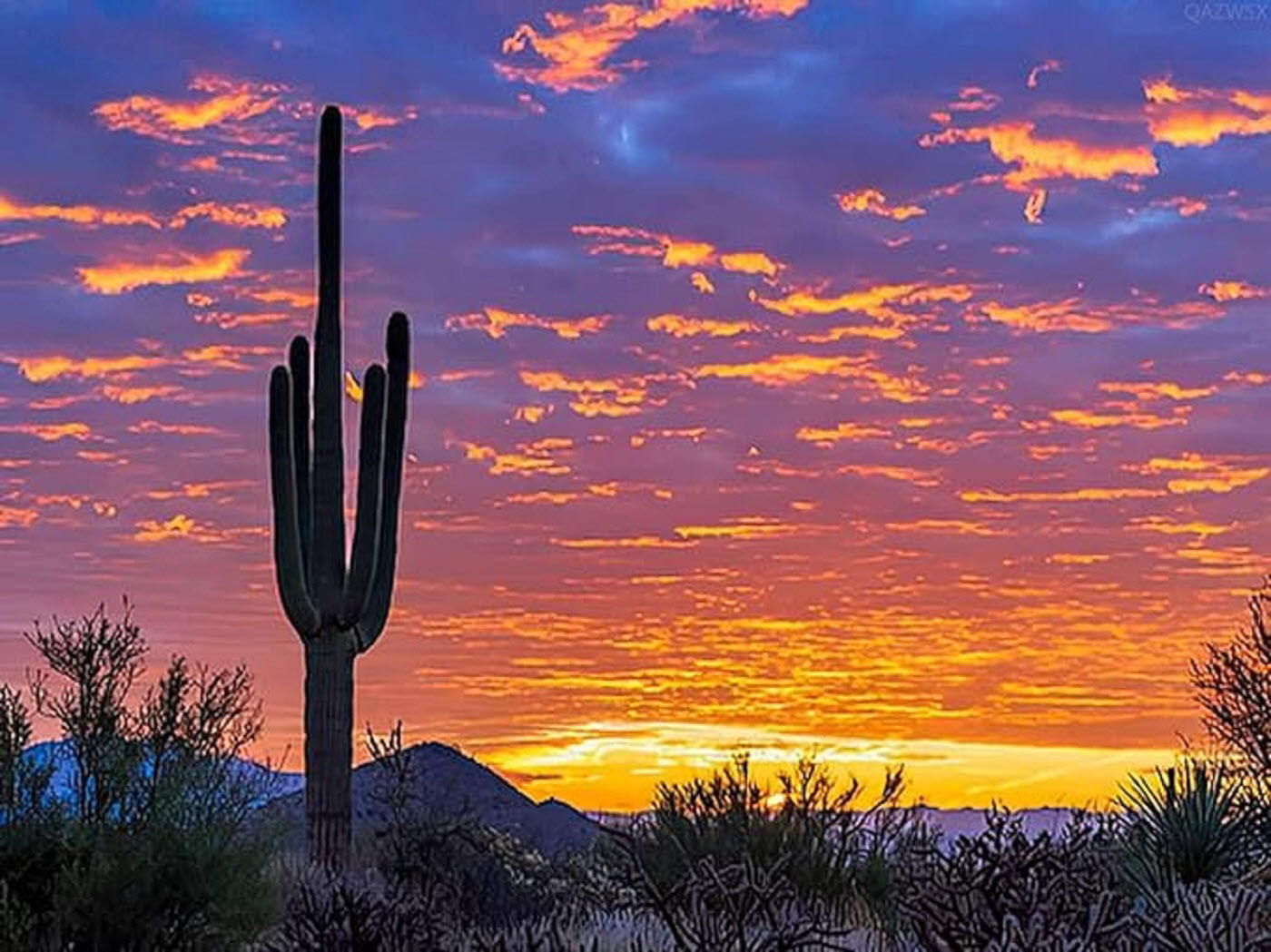
Arizona’s higher elevation areas, such as the northern mountains and volcanic plateau, have a more temperate climate with some actual evergreen forests and more precipitation. This is where the Colorado River carved the Grand Canyon. It is easier to understand the topography when you realize that the canyon top is actually the edge of a large plateau 6- or 7,000 feet above sea level.
Winslow is situated on this plateau. It is a dusty western town with a 19th-century streetscape and grid. In 1881, the Santa Fe Railroad built a terminal in Winslow, and the town started to grow. In addition to the railroad, US Route 66, an east-west highway starting in Chicago, passes through Winslow and other towns on the plateau. The highway was first designated in 1926 and supported growth in the area, especially after World War ll.
As automobiles and truck transport replaced trains, railroad service to the town mostly ended by 1957. Then Route 66 was replaced by Interstate 40, bypassing the town. Events are described in a timeline published by Standing-on-the-Corner Foundation:
"Winslow’s prominence eventually faded. The town nearly disappeared after I-40 bypassed the major stops on Historic Route 66. Traffic from the Mother Road virtually evaporated overnight. One by one the Mom and Pop shops that had lit up downtown for decades began to close. For the next twenty years, Winslow remained frozen in time."
This sequence of events was depicted, sort of, in the animated Disney movie Cars. The movie is a fictional account of the history of Route 66, except that all the characters are not people but sentient cars. At one point, the talking cars stay overnight in a tepee motel based on an actual motel in neighboring Holbrook.
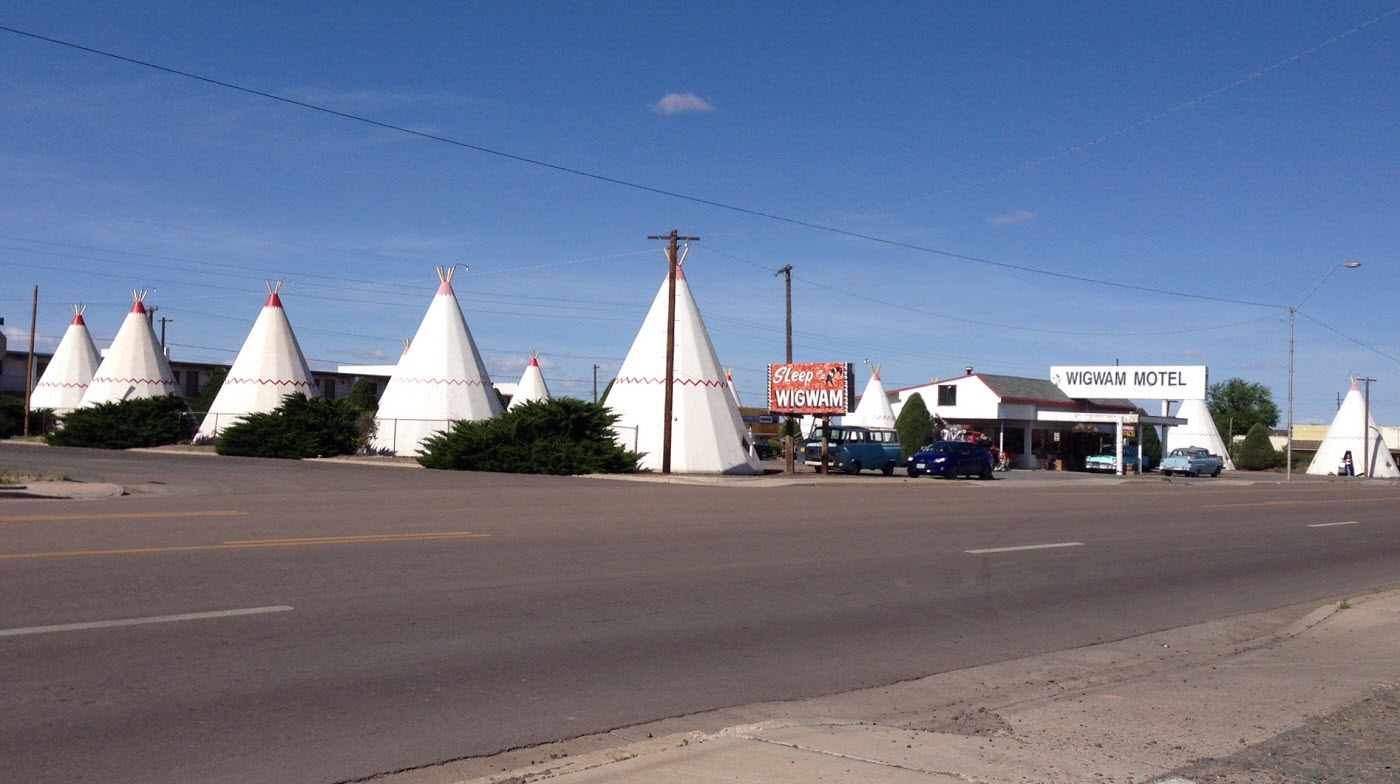
Winslow’s return to prominence was helped by the musical group the Eagles. In 1972, the group came out with their first hit song, “Take it Easy.” The song includes the verse “standing on a corner in Winslow, Arizona,” attracting hundreds of thousands of visitors and putting the town on the national map. It is interesting to think that earlier versions of the song may have been based on Star Trek and not on romance. (As an aside, it is interesting for engineers to think everything is based on Star Trek.) An initial draft of the song may have contained the following verse:
“It’s a Gorn my lord in a flatbed ford, slowing down to take a look at me.”
This version did not make the final cut.

Winslow is a great place to visit. It is evocative of its western past. In Winslow, it is fun to hang out on the corner and listen to Eagles songs. Unfortunately, as we pulled away from town on a dark desert highway, my rental’s back wheel started to rub and make a peculiar noise. It was annoying, but I didn’t let the sound of it drive me crazy.



